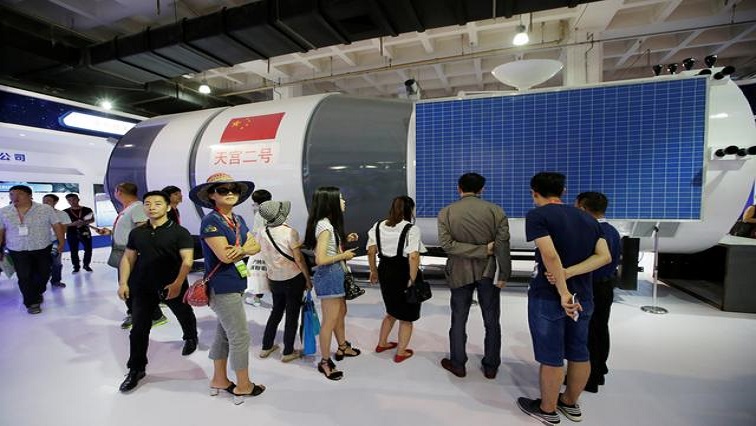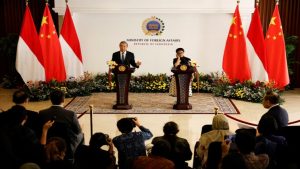China will continue to advance its space programme with a series of launch missions in 2021 and promote the development of the commercial space industry during the 14th Five-Year Plan period (2021-2025), according to Yuan Jie, president of the China Aerospace Science and Technology Corporation (CASC).
As the main contractor for the Chinese space program, the CASC has been listed among the top 100 global defense companies.
Yuan, one of space scientists and engineers who participated in the research and development of the Chang’e-5 lunar mission, attended a meeting held by Party and state leaders at the Great Hall of the People in Beijing on Monday.
During an exclusive interview on Tuesday, he talked about some difficulties his team met in the lunar mission.
“One of the tasks is to display the national flag. The temperature difference on the surface of the moon is plus or minus 150 degrees (Celsius), and there’s also a radiation environment, which means that the material for making the flag need to be considered, so we have done many tests, including multiple rounds of filtering for the materials. This material must be able to keep its shape from changing due to temperature, and it must also keep its color from being affected by radiation,” Yuan said.
Yuan elaborated further about China’s aerospace goals this year.
“China’s first Mars probe Tianwen-1 has entered the orbit of Mars so far and is expected to land on the surface of Mars in May. We plan to launch the core module of our space station in the near future, and then the next step is to launch a cargo spacecraft, a manned spacecraft, and a space experiment module. The series of launch missions should be said to be the highlight of China’s aerospace industry in 2021,” explained Yuan.
China has developed a family of “Kuaizhou” carrier rockets to promote its commercial space industry during the 13th Five-Year Plan period (2015-2020).
As the first member of the family, the Kuaizhou-1A carrier rocket has sent 19 small satellites into space. Yuan said some technical problems need to be solved.
“The main problems include the reliability of the engine, the related control system, and the accuracy of sending a satellite or multiple satellites into orbit. In addition, the carrying capacity is a crucial indicator. The Kuaizhou 11 under development is a domestic solid carrier rocket with the largest carrying capacity, the longest diameter, and the strongest take-off thrust. We expect it could fly again this year. If it can succeed, it will become one of the main types of rockets for the commercial space industry in the future,” Yuan said.
Carried by the Kuaizhou-1A carrier rocket, two satellites, Xingyun-2 01 and 02, were launched in May 2020 and successfully entered their planned orbit, marking a new chapter for the commercial space industry in the field of satellite Internet of Things (IoT).
“It should be said that the entire test has gone smoothly. In the future, they can be seamlessly connected, whether on the ground, in the ocean, or in the north and south poles where 5G signals are unavailable. For example, the status of containers could be monitored in real-time, including the location when they are shipped on the road or in the ocean. In addition, there are many application scenarios, including environmental monitoring and disaster monitoring,” said Yuan.
By around 2022, the Xingyun project will have initially completed the construction of the IoT constellation with 12 satellites, Yuan said.
“We will build a basic system by 2022, with 12 satellites. In the future, the number of satellites may be increased based on the requirements of the system, such as higher data volume and more accurate time, but right now, a dozen satellites are enough,” said Yuan.
A national aerospace industry base has been built in Wuhan, the capital city of central China’s Hubei Province, to meet the production needs of commercial rockets.
“Currently, (the Wuhan National Aerospace Industry Base) has formed a relatively large scale. A rocket industrial park (inside the base) has been built and has the capacity to produce 20 Kuaizhou rockets per year. After the rest construction is completed, the capacity can reach 100. The base also integrates various fields of satellites, including manufacturing and applications. The satellite industrial park (inside the base) has an annual production capacity of about 100 satellites,” said Yuan.






